Spotlight on Jennifer Whitney
Aug 18, 2014
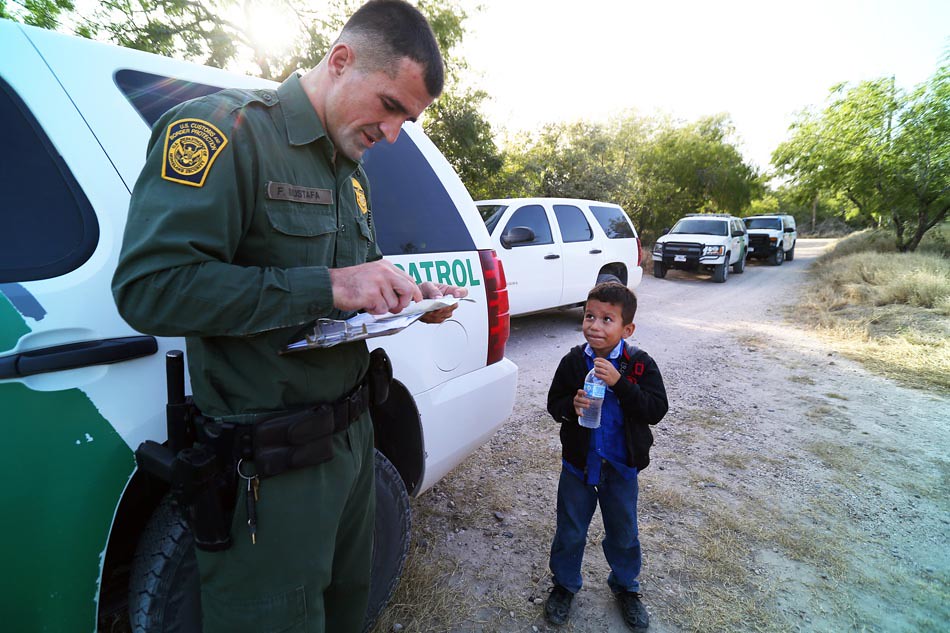
TID:
This is a great image, very telling in a highly emotional news story. Can you let us know a little of the back story?
JENNIFER:
I was incredibly lucky to be working with veteran NYT immigration reporter Julia Preston on this story. We arrived in McAllen immediately after the video broke showing terrible conditions in one of the overcrowded detainment facilities, so access to everything had been completely shut down. Julia and I and a few other news outlets that arrived early on were driving around on the remote border patrol access roads along the river very early morning and late night trying to find people crossing when we weren’t attending press conferences, but we hadn’t come up with much the first two days and it was frustrating. There had been a lot of scouting and phone calling and asking and waiting, but not much to actually delve into visually.
I spent the day before at the church shelter downtown near the bus station where they were feeding those who had been temporarily released and giving them a place to shower and rest and supplies for the road, and was pretty moved after seeing how utterly exhausted and scared and sometimes sick most of the women and children were at that point in their journey. Finally, through Julia’s connections, we were granted a Border Patrol ride along and that’s how I was able to make this picture. In this time of instant gratification and newsroom cuts, Julia is a living testament to the value of beat reporters who tirelessly cover one issue, eventually earning them unparalleled insight and access over years of hard work.
TID:
What was you interest in this topic and how have you built inroads into it?
JENNIFER:
Being based in San Antonio, I cover the border from different perspectives all the time; immigration and everything happening on the border directly affects my community in many ways. I’ve spent lots of time in the Rio Grande Valley the last two years, working first for the Center for Reproductive Rights in partnership with the National Latina Institute for Reproductive Healthon a report for the legislature about how the cuts in funding for women’s health care and family planning have affected the lives of the poorest Latina women on the border. I have continued to work on that project on my own and with the help of assignments from other clients.
By way of that project, I’ve built a network of sources and learned immensely about the culture of fear, poverty, and the intricate underground economy of the border region. I won’t tell the story of the first time I was sent to Laredo alone and green a few years ago to illustrate a cartel related money laundering scheme, but I will say that I got threatened and chased out of town by a very imposing underground officer of unknown affiliation, and watched my rear view mirror all the way to the check point. Lets just say that’s where my education and probably intensified curiosity about the border began…
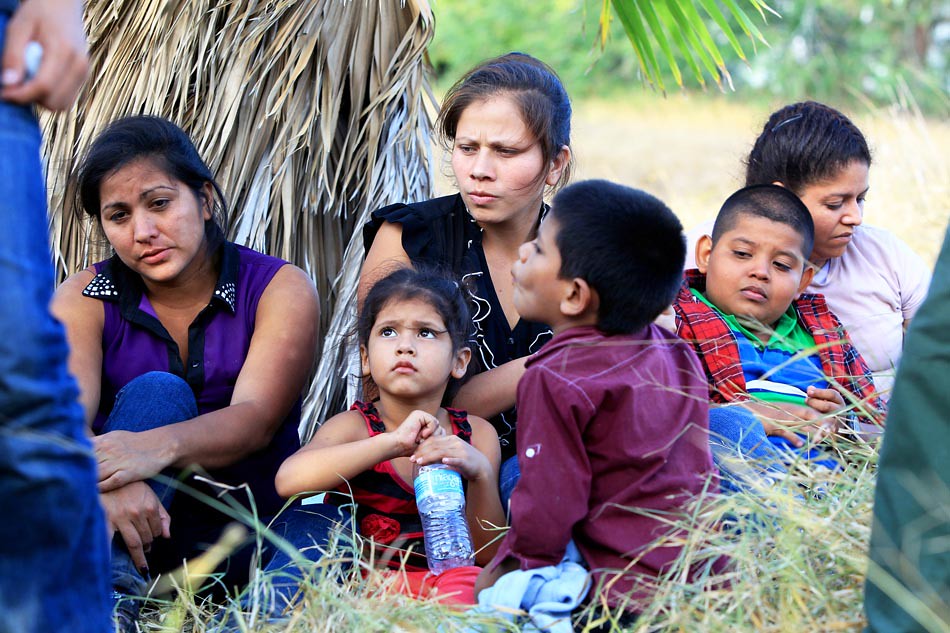
TID:
This photo had wide distribution. Can you let us know where it went and what the reaction was to it? In addition, we'd love to know your reaction to this.
JENNIFER:
Initially, the image ran in the NYT with Julia’s story titled “Snakes and Thorny Brush, and Children at the Border Alone” which had a lot of impact right out the gate and went viral on twitter. It was exciting to learn that people were having such a visceral response to the image and that it was drawing attention to the issue. It's rewarding to have made an image that may actually have sparked change towards better circumstances for the people who so graciously allowed me to witness and document their struggle; the dream of making pictures that actually have the power to create change is why I got into this crazy career we call photojournalism in the first place. Witnessing several rounds of layoffs first hand, watching talented peers leave the industry for more security, and the never ending hustle to make ends meet as a freelancer have certainly challenged my faith at times.
The response to this image also helped reaffirm the power of the still image, which I am still a huge proponent of in a time where we are being pushed toward video and multimedia applications for everything. The only other camera on that ride along was an NBC tv reporter’s, and her video did not garner the same emotional response as far as I know. That moment happened very quickly amidst a chaotic situation, and I could not have been present enough to capture it had I been trying to shoot video in addition to stills or Instagramming with my iPhone at the same time. It ran a few days later with a Dallas Morning News story and was shared all over Facebook that way. Its been relicensed in Time, Bloomberg Business Week, and several other places as well as used by NGO’s like World Vision for fundraising efforts.
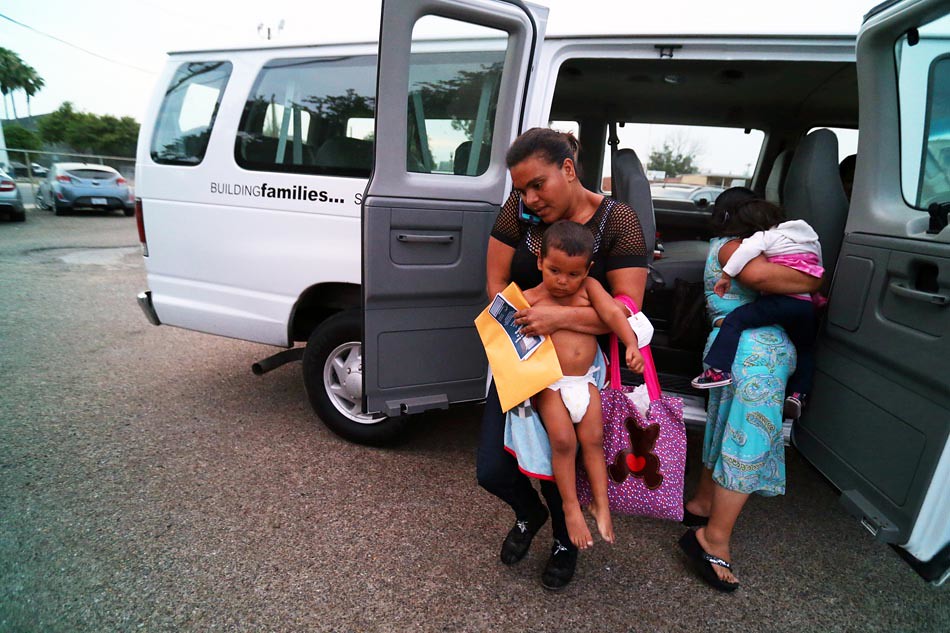
TID:
What challenges did you encounter while working to make this image and the others?
JENNIFER:
In this case, like in many news stories that overtake national media attention and get really big, access is the greatest challenge. Ride-alongs are controlled situations, and the ratio of reporters to escorts and PR flacks is usually at least 1 to 2; this situation was no exception. We were riding very narrow paths in a caravan of SUV’s and each time we would encounter a scene and get out, it was immediately overrun by the crowd of extra bodies present on our behalf. So I was frustrated with being able to make a clean image of the scenes we were witnessing without an officer walking into my frame and chatting up a detainee just for the entertainment value, and with being elbow to elbow with other reporters in a small area.
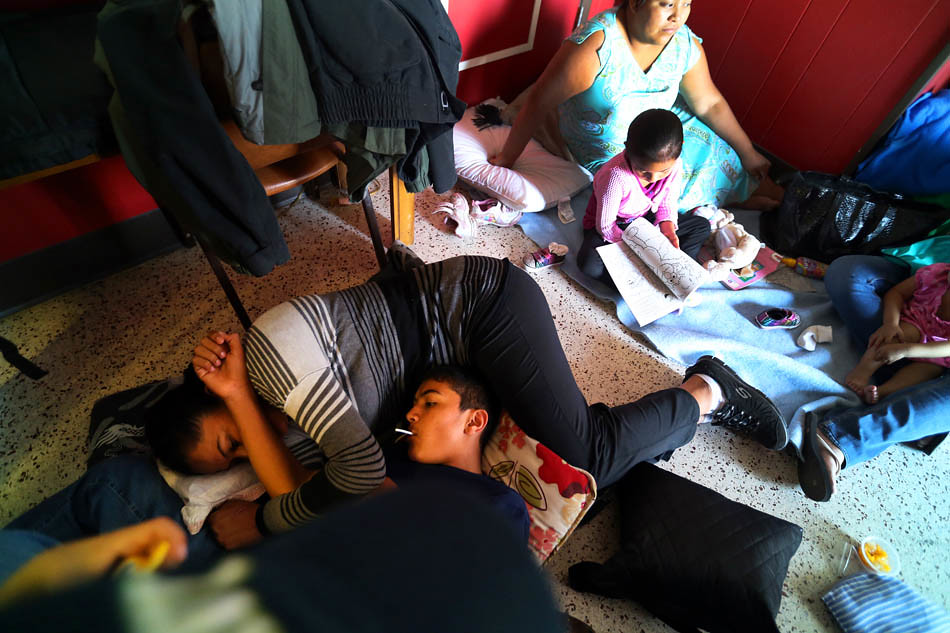
TID:
How did you handle and overcome these problems?
JENNIFER:
At the shelter, it was very chaotic and some of the volunteers were protective and averse to having me around at first. While many news outlets came and left for short periods of time, I stayed all day and late into the night going back and forth between the shelter and the bus station with the volunteers. That allowed me to get to know people and made them comfortable enough to allow me to witness the tough stuff like the sick baby being bathed and dressed, and the resting area that had been blocked off from the main room. Regardless of the circumstances, I focus on staying present with the people whose story I’m trying to illustrate, and experience the scene from that perspective using all my senses.
I always speak with people or at least put the camera aside and look them in the eye and share a moment, and find a way to relate even if only for a split second amidst the chaos. In a tough visual situation where what you have to work with is limited and you’re in a crowd of other reporters and cameras vying for space, you have to separate yourself from the crowd both physically and emotionally and keep working it until you find something beyond the surface. Patience, determination, focus, and empathy are key. After that I think so much of it is sheer intuition, which is built on all of your experiences and observations leading up to that moment.
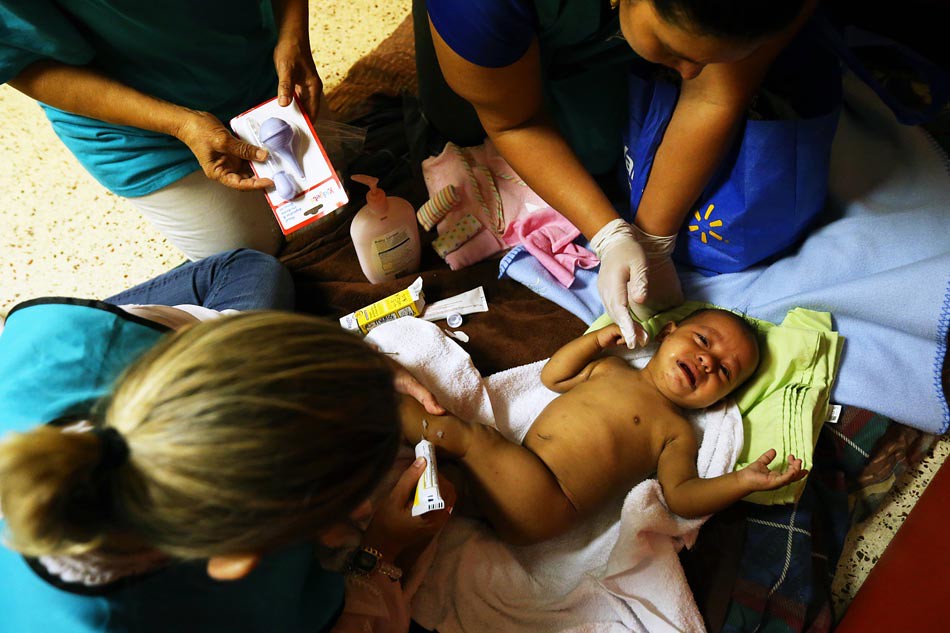
TID:
Now, on to the moment. Can you talk about the moments leading up to the picture and also the actual moment.
JENNIFER:
The light was really contrasty and awful and the main part of the scene was a crowd of women and children just sitting on the ground waiting to be processed. I was immediately struck by the looks of utter exhaustion on their faces and also how mature the faces of the children were for being so young, so mostly I just watched and captured those expressions because there wasn’t much else happening. I saw the boy traveling alone get called up and so I turned around as he was handing his birth certificate to the officer and just kept shooting.
The chief saw me and came into my frame and started interrogating the boy, so I backed up looking for a better frame and sending a signal to the chief to stop interrupting the moment. In a controlled situation particularly, there is a nuance to knowing how to finesse what you need. Once the chief left, the boy refocused on his situation and his expression said so much. I only shot two frames before the reporter saw what was happening and came over with her microphone and started asking questions, so I turned away and went looking for the next frame and that was that.
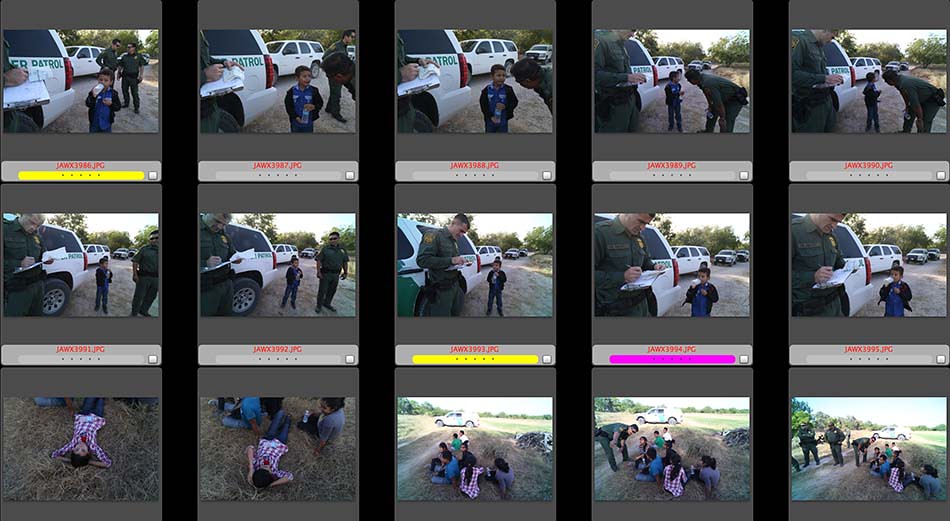
TID:
What surprised you about the moment?
JENNIFER:
I was so struck by the facial expressions of all the children but particularly that one. He looked so grown up for being 8, and was relatively calm considering everything he had been through and the unknown ahead of him.
TID:
What have you learned about yourself in the process of making images like this?
JENNIFER:
When we finished the ride along that day, I knew I had made some kind of image of the boy handing the officer his birth certificate and that that had been an important moment, but I really didn’t think I had anything special. I was frustrated by how controlled we were and how short our interactions were with each group we had encountered. I remember telling the reporter about that moment and also telling her how struck I was by the faces of the women and children and how hauntingly exhausted yet resilient they looked. I guess I learned that my intuition is worth more than I give myself credit for at this point in my experience, and that staying emotionally present is the way to tap into that even in tough situations. And, in general, that I should go easier on myself and not take everything so seriously because nothing is ever perfect. In the long run, the process is far more valuable than the product itself.
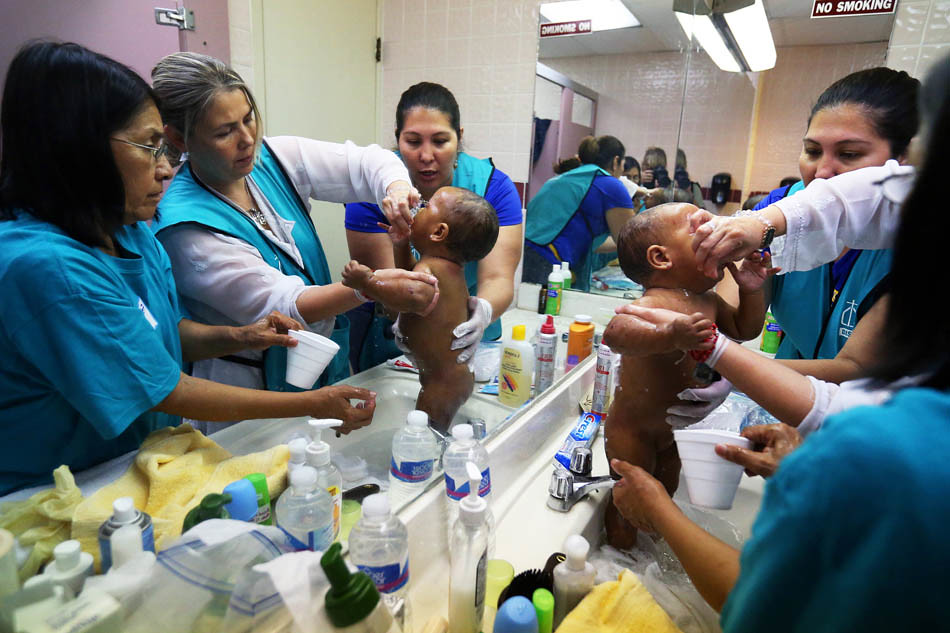
TID:
What have you learned about others?
JENNIFER:
So much! The privilege to witness other peoples lives and experiences, to learn about what it feels like to be a farmer, a millionaire, a homeless child, a refugee, a truck driver, a famous musician or athlete, a woman waiting to have an abortion, a prisoner… really expands and humbles you. We are all human beings that need love, security, and affirmation regardless of our circumstances. We are all sharing the same planet and breathing the same air. So I’ve learned that we are all inherently good, but pain and struggle in life over time, and often the circumstances we are born into, break people down and force them into survival mode. That’s why we have all these terrible things going on in the world and so many people who are lost and full of anger and acting out of selfishness and hate.
And there are so many people that think they are separate from the struggle or that it doesn’t affect them because they choose to live in a bubble of privilege and protection. Some people don’t want to look at the really difficult things and that makes me very sad for them. Looking at the difficult things is how we grow, so those people who avoid reality just get stuck. The people who are really authentic, who aren’t afraid to be themselves regardless of their place in society or how others may judge them, are the ones that interest me the most.
TID:
In conclusion, what advice do you have for photographers?
JENNIFER:
I feel weird about offering advice when I still need so much of it myself. I think respect is really the biggest thing. You have to respect the people you photograph and understand what an incredible gift it is to be granted access to their most intimate and vulnerable moments, and you have to allow yourself to be vulnerable as an expression of gratitude. You also have to respect yourself and not compromise your values and the projects that you’re really drawn to regardless of how clients treat you (because unfortunately a lot of them try to treat you like crap).
It is so important to be genuinely empathetic and stay present and focused and just trust your own intuition. Building connections and relationships is incredibly valuable. Passion and perseverance and staying true to yourself and the things you’re curious about will eventually take you somewhere amazing, even if it isn’t necessarily where you expected to go.

:::BIO:::
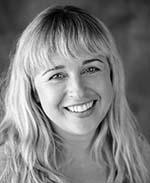
Jennifer Whitney (b. 1978) is a freelance photographer based in San Antonio,TX. She holds a BFA in photography and BA in American studies from the University of Colorado Boulder, a master’s from the Missouri School of Journalism, and did post graduate work at the Salt Institute for Documentary Studies in Portland, ME. During many years of moving and traveling around the US, she worked as a fine dining waitress, taught children and adults the lost art of the darkroom, assisted commercial and event photographers in San Francisco, and interned at the Naples (FL) Daily News and the San Antonio Express-News where she stayed on as a full time contractor
before setting out on her own.
Originally from Florida, Texas makes sense to her because it’s the crossroads between the independent values and progressive thinking that led explorers to the promise of the West, and the good old Southern way she was raised. She loves green vegetables, designer jeans, sundresses, saturated color, monster trucks, music, movement of all kinds, and the great outdoors, particularly swimming with her crazy rescue goldendoodle Oakley whose summer cut is a mohawk.
You can see more of here work here: